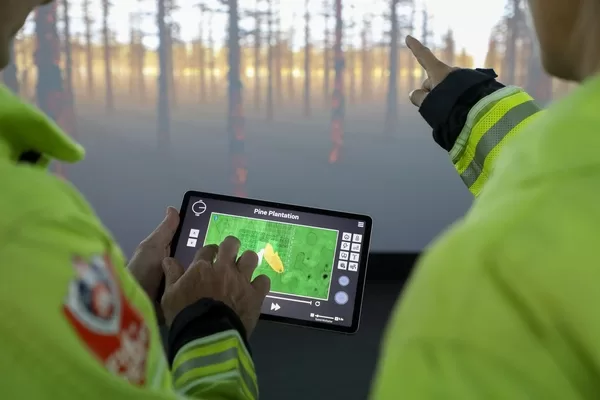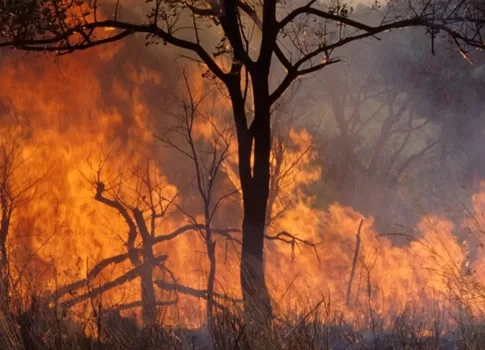Integrated Fire Management (IFM) is a holistic and multi-faceted approach to managing wildfires, aiming to prevent, prepare for, respond to, and recover from fire events in a coordinated and sustainable manner.
The FAO’s updated guidelines emphasize the importance of IFM as a key strategy to tackle the increasing threat of extreme wildfires. Here, we delve deeper into the various components of IFM and how they contribute to effective wildfire management.
Advertisement:
Integrated Fire Management (IFM): A Comprehensive Approach to Wildfire Management
Prevention
Risk Assessment and Mapping One of the cornerstones of IFM is the identification and assessment of wildfire risks. This involves mapping fire-prone areas using satellite imagery, historical data, and other geospatial technologies. By understanding where and when fires are likely to occur, resources can be allocated more effectively to mitigate these risks.
Vegetation Management Managing vegetation is crucial in reducing wildfire fuel loads. This includes activities such as controlled burns (also known as prescribed burning), mechanical thinning, and the removal of invasive species. These practices help maintain the health of ecosystems while reducing the likelihood of uncontrollable wildfires.
Firebreaks and Infrastructure Creating firebreaks—gaps in vegetation that can slow or stop the spread of fire—is another important preventive measure. Additionally, ensuring that infrastructure such as roads, power lines, and buildings are designed and maintained to minimize fire risk is essential.
Preparedness
Community Education and Involvement Educating communities about wildfire risks and preparedness measures is vital. Public awareness campaigns, workshops, and training programs can equip individuals and communities with the knowledge and skills to prevent and respond to wildfires. Involving communities in planning and decision-making processes fosters a sense of ownership and responsibility.
Early Warning Systems Developing and implementing early warning systems that use advanced technologies like satellite monitoring, weather forecasting, and real-time data analysis can provide timely alerts about potential fire outbreaks. This allows for rapid response and evacuation if necessary.
Capacity Building Investing in the capacity building of firefighting personnel and relevant stakeholders is crucial. This includes regular training, simulation exercises, and the establishment of specialized wildfire management units. Building strong, well-equipped teams ensures a more effective and coordinated response to wildfires.
Response
Coordinated Firefighting Efforts When wildfires occur, a coordinated and rapid response is critical to minimizing damage. This involves deploying firefighting teams, equipment, and resources strategically. Utilizing advanced technologies such as drones and satellite imagery can aid in monitoring fire behavior and directing firefighting efforts more effectively.
Cross-Border Collaboration Wildfires do not respect political boundaries, making cross-border collaboration essential. Countries must work together to share resources, information, and expertise. Establishing joint response teams and agreements can enhance the effectiveness of firefighting efforts.
Recovery
Post-Fire Rehabilitation After a wildfire, efforts must focus on rehabilitation and restoration. This includes reforestation, soil stabilization, and the restoration of damaged ecosystems. These activities help prevent secondary disasters such as landslides and promote the recovery of biodiversity.
Supporting Affected Communities Providing support to communities affected by wildfires is crucial. This includes financial assistance, mental health services, and rebuilding infrastructure. Engaging communities in the recovery process ensures that their needs are met and helps them build resilience against future wildfires.
Sustainable Land and Forest Management
Balancing Use and Conservation A key aspect of IFM is the integration of wildfire management with sustainable land and forest management practices. This involves balancing the use of land for agriculture, forestry, and other purposes with the need to conserve natural ecosystems. Promoting sustainable agricultural practices, reducing deforestation, and implementing reforestation programs are essential components.
Policy and Legislation Strong policy and legislative frameworks are necessary to support IFM. Governments must develop and enforce regulations that promote sustainable land use and fire management practices. Incentives for adopting sustainable practices and penalties for non-compliance can drive positive change.
Integrated Fire Management (IFM) represents a comprehensive and strategic approach to tackling wildfires. By addressing prevention, preparedness, response, and recovery in a coordinated manner, IFM helps reduce the risk of extreme wildfires and their devastating impacts. The FAO’s updated guidelines provide a roadmap for countries to adopt and implement IFM, promoting resilience and sustainability in the face of growing wildfire threats.
By embracing IFM, countries can protect their ecosystems, safeguard human lives, and build a more resilient future. For more information and to access the updated guidelines, visit the FAO’s official website.

Related stories
NSW RFS Aviation Fleet, NSW Rural Fire Service
RFS Firefighters Unite North America and Australasia
Integrating Indigenous Knowledge into Bushfire Management
Advertisement:




